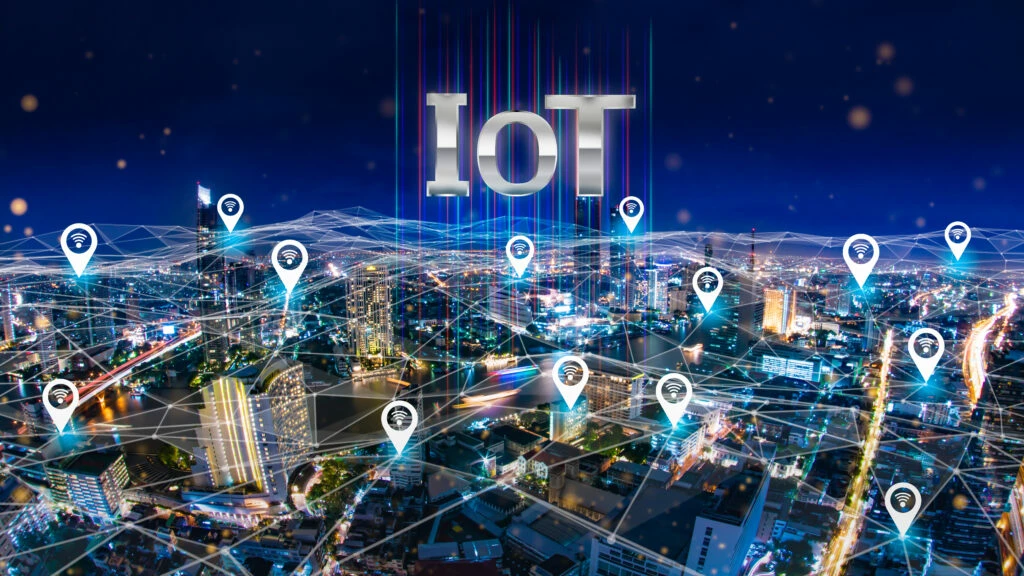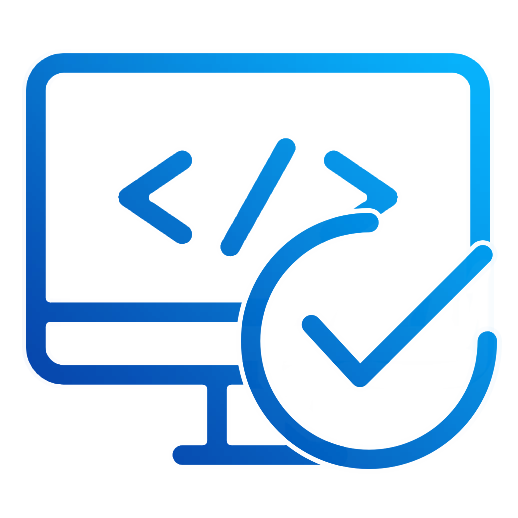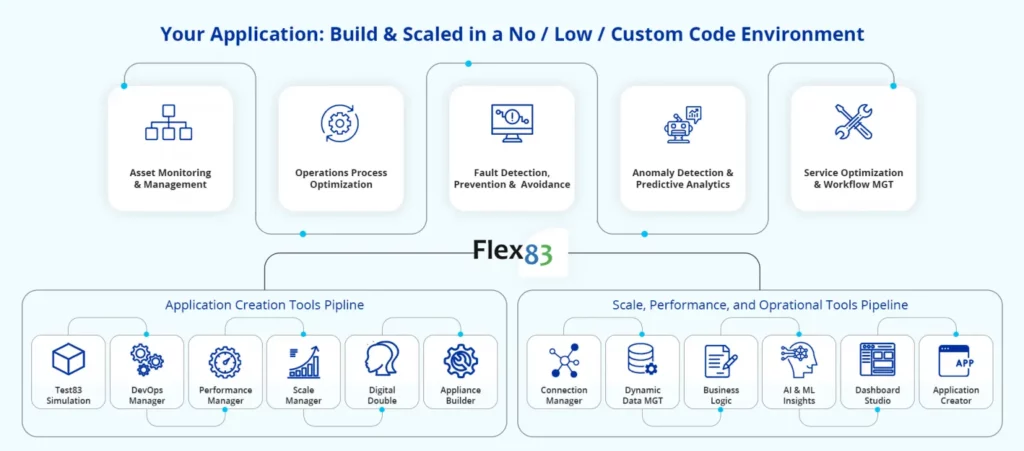
Gartner predicts that by 2024, 75 percent of big organizations will be utilizing low code development platforms.

Traditionally internet was accessible through a desktop, laptop, or mobile, but now physical devices can be connected with the internet such that it collects live data, sends it to the cloud, and then ultimately processes this data to valuable insights for any purpose right from turning off your AC from a remote location, optimizing business operations, or you can even operate a robot in space, the possibilities are endless with IoT.
IoT’s current wave is characterized by an intense interest in connecting sensors, objects, devices, data, and applications. A fully IoT system is usually complicated since it involves people of varied expertise and stakeholders with various responsibilities.
IoT is a collection of automated procedures and data integrated with heterogeneous entities such as hardware, software, and personnel that interact with each other and their environment to reach common goals.
According to McKinsey’s Nov 2021 report “The Internet of Things: Catching up to an accelerating opportunity,” IoT can enable $5.5 trillion to $12.6 trillion in value globally by 2030. The majority of this value is expected to be generated from B2B IoT applications.
Though there is a massive potential to the IoT market, very few businesses have capitalized on it because the same McKinsey report states that the total value captured by the B2B business in 2020 is only 1.6 trillion dollars.
The Factors for the Reduced Value Capture of the IoT Market
There are a lot of factors that are dampening the adoption of IoT solutions. Let’s take a look at a few of them here.
- Companies view IoT adoption as something solely led by the IT department without any cross-functional inputs from other departments.
- Connecting the physical devices with several different sensors, data architectures, and siloed IT systems, all speaking different languages, can be an arduous task, dramatically affecting the interoperability of the IoT applications.
Interoperability is the ability of the IoT solutions to communicate with each other, other IT systems and make use of the data available is vital to achieving the maximum economic impact.
- Installing IoT solutions and applications is an obstacle due to complicated interoperability issues. The difficulty in installing itself is proving to be a major disincentive for adopting IoT applications.
- Cybersecurity and privacy concerns are significant, as the multiple IoT apps involved can present weak spots for hackers to exploit.
Though the home sectors are seeing a major growth spurt in the adoption of IoT technologies, there is a stark contrast witnessed in factories, worksites, vehicle industries, health sectors, all of which can account for a potential economic value from IoT solutions.
Rapid Application Development Through Low Code and No-code Application Development
Low code and No-code application development platforms are a very new development technology that has revolutionized the building of apps for any sector and any need.
They feature a graphical user interface and a dedicated integrated development environment, allowing applications to be developed with simple drag and drop and a few clicks rather than writing long complex codes.
Using this technology, the platform handles all of the codings in the back end. The user (also known as a citizen developer) can create any application in any field without any formal coding experience or knowledge of any programming language.
Reasons for the Popularity of Low-Code and No-Code Platforms
Though low code application platforms and no-code application platforms have been gaining popularity since 2011, they have gained more traction recently due to the global pandemic in the past year.
The pandemic compelled many businesses to work remotely, resulting in many companies adopting low code no code application platforms to meet their immediate business demands without waiting for a software developer to implement these apps for them.
Let’s have a look at some of the statistics that support the growing popularity of these platforms in businesses.
- According to Gartner data released in february 2021, low code and no-code application development technologies have seen a tremendous rise in popularity. The income from low code development technologies is expected to be 13.8 billion US dollars, a 23 percent increase from 2020.
- Gartner even predicts that by 2024, 75 percent of big organizations will be utilizing low code development platforms, with the market for low code platforms growing at a rate of 40 percent each year.
- According to Redhat low-code and no-code platforms have a potential to reduce the application development time by almost 90%, which is a pretty big percentage.
Low-Code Platforms and No-Code Platforms Turning into Game-Changers for IoT Application Deployment
Low code development platforms are aimed at developers and people with a basic understanding of the coding language who can use the platform to develop and deploy IoT applications faster.
Low code solutions can help develop applications without multiple iterations. With instant feedback and automated testing, a great deal of workload is removed from the developers, allowing them to focus on innovations rather than repetitive work.
Whereas no-code development platforms provide a standardized approach allowing everybody in the business to participate directly in creating new processes or improvements. Citizen developers can develop and improve new applications and processes simply using the platform’s digital editor.
New IoT applications can be built in a record time with simple clicks and not code using no-code platforms.
Low code and no-code platforms for IoT solutions have sparked a revolution by democratizing complex technological processes, allowing anyone to bring their thoughts to life without being constrained by intimidating codes.
Develop IoT Solutions Using Low-Code or No-Code Platforms
Low code and no-code platforms have spread their wings in almost all the market segments, be it mobile applications, database applications, process applications, and request handling applications. IoT is the next potential market segment for low code and no-code platforms.
With low code and no-code platforms, you can easily bridge the wide gap between developers and non-developers, allowing everyone to build an application that suits their business needs.
Before delving further, let us look at the architecture of a typical IoT system.

There are four layers in an IoT architecture:
Things: This is a combination of onboard devices such as sensors, tags, actuators, and physical devices like watches, refrigerators, cars, etc., and the sensors or tags attached to these physical devices collect the data from them.
IoT Gateways: Gateway is the connecting pathway between the physical device and the digital world, and the standard IoT gateways are Wi-Fi, MQTT, HTTP, Bluetooth, Z-Wave, etc.,
Platforms Server: It is a combination of data storage and data processing services on the cloud where the data processing takes place using artificial intelligence and machine learning. The processed data is then streamed back to the final user across different user interfaces or third-party services or back to the actuators.
Applications Layer: Applications layer is the final layer that the end-user can view on a desktop, laptop, or mobile, where the processed data is available to them in reports and dashboards. These reports and dashboards carry valuable insights into the workings of the physical device.
You can easily infer the number of different devices, applications, and systems in the IoT architecture from the above information. Integrating all these via a regular software development route is highly complex.
Low code or no-code development platforms can quickly minimize these complexities using an application processing interface or API approach.
There is enormous pressure for the industries to incorporate IoT across the supply chain from production to automation of business processes. IoT projects can be launched instantly with these platforms without learning complicated code languages, thus preventing enterprises from spending a lot of money and time on IoT projects.
Many of these IoT applications exist on the site, and a non-software developer might not fully understand the nuances of testing governance and security of these applications. The low code and no-code development platforms use simulators to test these applications for security and compliance to ensure that the emerging applications are developed safely and tested before deployment.
Flex83 is one such application enablement platform created by the IoT83 team that uses low code, no-codes, and custom codes to build IoT solutions from scratch.
Flex83’s AEP connection manager, which connects anything to anything, makes it simple to communicate across diverse devices, apps, APIs, web applications, and databases.

Data transformation studio or ETL studio extracts data from different data sources, transforms and loads the data creating a dynamic data pipe for engineers, data scientists, and researchers to analyze.
Data lake helps store all the structured, unstructured, and semi-structured data from different data siloes, creating a centralized data repository.
Flex83’s low code, no-code, and custom code engagement models enable you to construct basic or complex applications more quickly. You can create custom business logic, algorithms, processes, and automation rules, as well as secure APIs for your IoT applications easily.
You can integrate machine learning and artificial intelligence into the IoT applications to deliver valuable insights with insights studio; you may also integrate with well-known cloud gateways such as Amazon IoT Core and Azure IoT Hub.
Finally, dashboard studio aids in the transformation of data into actionable optimizations for the IoT systems, and widget builder may be used to create custom dashboards.
IoT83’s Flex83 provides a single platform that looks after the entire life cycle of the IoT applications right from creating, managing and gaining insights from them by providing a flexible, scalable, secure low code and no-code development platform.
It helps you create your IoT solutions specific to your business needs without breaking your head about the underlying technology, and faster time to market IoT solutions can be developed, leading to higher ROI.
Conclusion
Low code and no-code platforms change everything for IoT applications and solutions by providing a dedicated platform specifically created to manage any use case related to IoT applications.
The current wave of digital transformation and faster adoption of innovative technologies is forcing industries to adopt IoT solutions at a rapid pace, and low-code and no-code platforms are proving to be a significant catalyst for implementing these digital transformation ideas at a quick rate without becoming entangled in a web of complex programming languages and technology.
